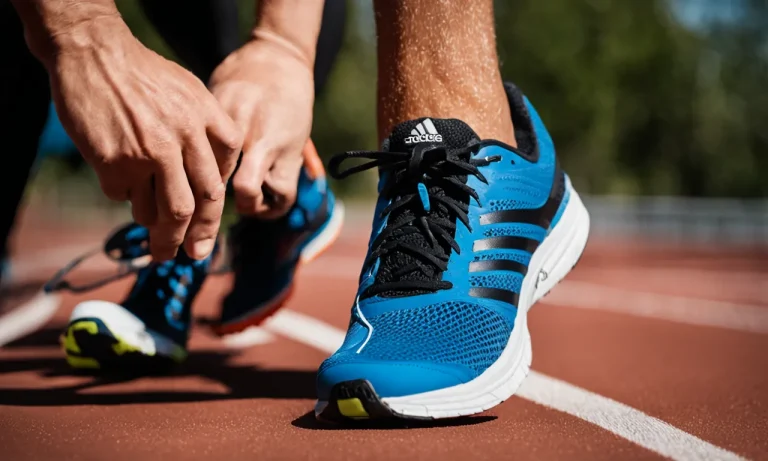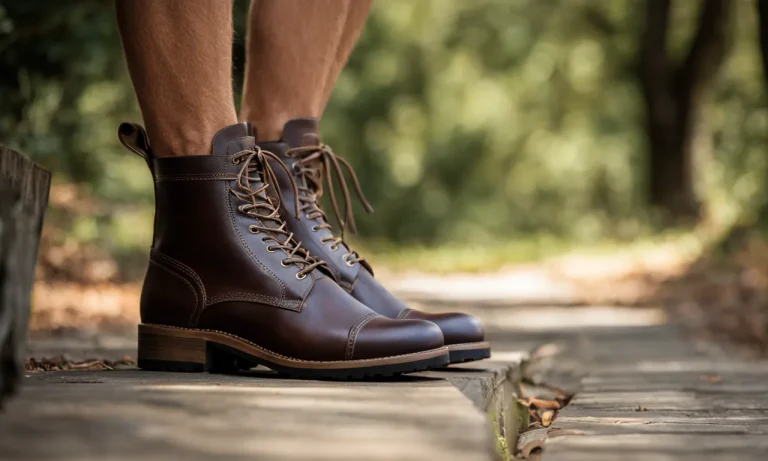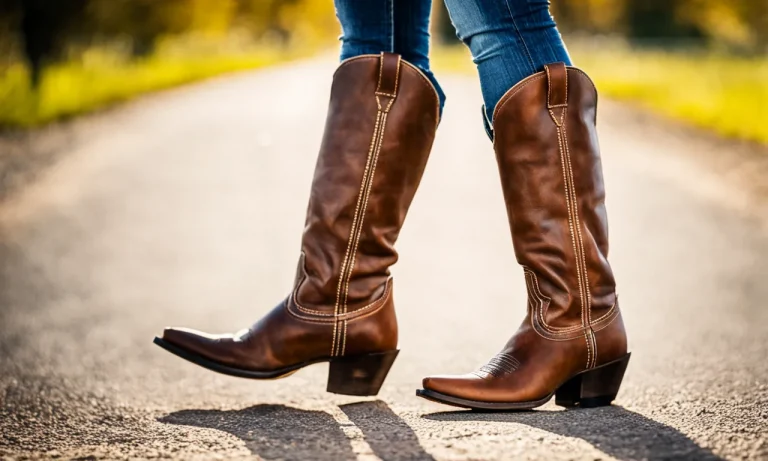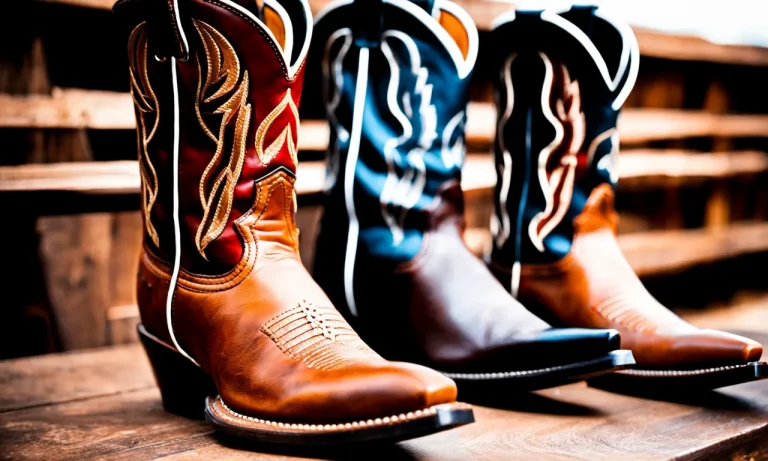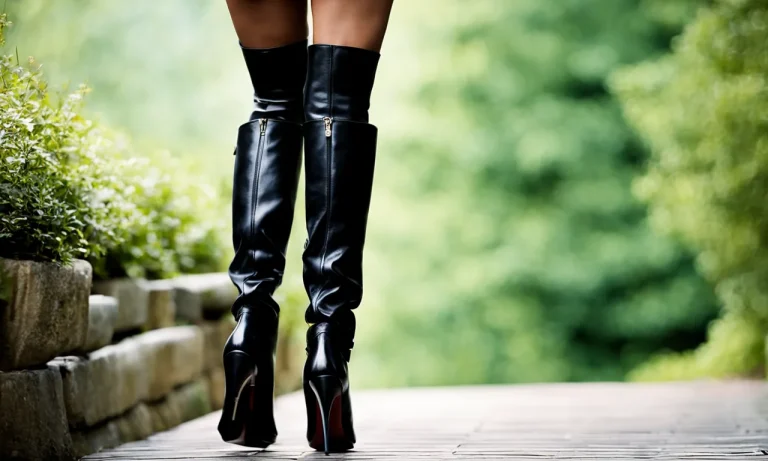For soldiers who face extreme cold weather conditions, having proper footwear is crucial. The right cold weather army boots can make all the difference in safely and effectively carrying out missions in frigid environments.
If you’re short on time, here’s a quick answer to your question: The Belleville 800 Waterproof ST Extreme Cold Weather Boot and the Rocky S2V Gore-Tex Waterproof Boot are two top recommendations for army cold weather boots thanks to their insulation, traction, and waterproofing.
In this comprehensive guide, we will cover everything you need to know about choosing the best army cold weather boots. We will discuss key features like insulation, temperature rating, traction, waterproofing, weight, and more.
We will also provide detailed reviews of some of the most popular army-approved cold weather boots from brands like Rocky, Belleville, Danner, and more.
Key Features to Look for in Cold Weather Army Boots
When it comes to choosing the best army cold weather boots, there are several key features to consider. These features not only ensure that your feet stay warm and dry in harsh winter conditions, but they also contribute to your overall comfort and durability.
Here are the most important features to look for:
Insulation and Temperature Rating
One of the primary considerations when selecting cold weather army boots is the level of insulation they provide. Look for boots with high-quality insulation materials, such as Thinsulate or Primaloft, which offer excellent warmth without adding excessive bulk.
It’s also essential to check the temperature rating of the boots. This rating indicates the lowest temperature at which the boots can keep your feet warm. A lower temperature rating means better protection in extreme cold.
Traction
Another crucial feature to consider is the traction of the boots. In icy and slippery conditions, having a good grip is essential to prevent falls and injuries. Look for boots with a robust outsole and deep lugs that provide excellent traction on various surfaces.
Vibram and Michelin are two well-known brands for their superior traction technology.
Waterproofing
In cold weather, wet feet can quickly lead to discomfort and even frostbite. Therefore, it’s crucial to choose boots that are waterproof or at least water-resistant. Gore-Tex is a popular waterproofing technology that allows your feet to breathe while keeping them dry.
Additionally, look for boots with sealed seams and a gusseted tongue to prevent water from seeping in through the openings.
Weight
The weight of your cold weather boots is another factor to consider. While you want a boot that provides adequate insulation and protection, you also don’t want it to be overly heavy. Lightweight boots will allow you to move more freely and prevent unnecessary fatigue.
Look for boots made with lightweight yet durable materials such as synthetic fabrics and lightweight insulation.
Comfort and Durability
Comfort and durability go hand in hand when it comes to cold weather boots. Look for boots with ample cushioning and support, as well as a well-designed footbed that conforms to your feet. Also, pay attention to the boot’s construction and materials used.
Reinforced stitching, high-quality leather or synthetic materials, and a sturdy toe cap are all indicators of a durable boot that can withstand the rigors of cold weather conditions.
By considering these key features, you can ensure that you select the best army cold weather boots that will keep your feet warm, dry, and comfortable in even the harshest winter environments.
Reviews of the Best Army Cold Weather Boots
Rocky S2V Gore-Tex Waterproof Boot
The Rocky S2V Gore-Tex Waterproof Boot is a top choice for soldiers in cold weather conditions. It features a waterproof and breathable Gore-Tex lining that keeps your feet dry and comfortable. The boot also provides excellent insulation to keep your feet warm in frigid temperatures.
With its durable construction and sturdy traction, it is designed to withstand the toughest terrains. Many soldiers praise its durability and comfort, making it a reliable option for cold weather operations.
Belleville 800 Waterproof ST Extreme Cold Weather Boot
The Belleville 800 Waterproof ST Extreme Cold Weather Boot is specifically designed to withstand extreme cold weather conditions. It features a 200g Thinsulate insulation that provides exceptional warmth without adding bulk.
The boot is also equipped with a waterproof membrane that keeps your feet dry in wet and snowy environments. Its slip-resistant outsole ensures superior traction on slippery surfaces. Soldiers who have used this boot commend its ability to keep their feet warm and dry in even the harshest cold weather conditions.
Danner Glacier Extreme Cold Weather Boot
The Danner Glacier Extreme Cold Weather Boot is a high-quality option for soldiers facing extreme cold temperatures. It is constructed with full-grain leather and a waterproof GORE-TEX lining, providing both durability and protection against moisture.
The boot also features a 200g Thinsulate insulation that keeps your feet warm without compromising mobility. Its Vibram outsole offers excellent traction on various terrains. Soldiers who have worn these boots appreciate their durability and ability to keep their feet warm in freezing temperatures.
Rocky AlphaForce Cold Weather Boot
The Rocky AlphaForce Cold Weather Boot is designed to keep your feet warm and comfortable in cold weather conditions. It features 400g Thinsulate insulation that provides excellent warmth without adding bulk. The boot also has a moisture-wicking lining that helps keep your feet dry.
Its slip-resistant outsole offers reliable traction on slippery surfaces. Soldiers who have worn these boots appreciate their comfort and insulation, making them a great choice for cold weather operations.
Bates 8″ Durashock Boot
The Bates 8″ Durashock Boot is a reliable option for soldiers in cold weather environments. It features a waterproof and breathable membrane that keeps your feet dry and comfortable. The boot also incorporates 200g Thinsulate insulation that provides warmth in cold temperatures.
Its slip-resistant outsole ensures stability and traction on various surfaces. Soldiers who have worn these boots praise their durability and ability to keep their feet warm and dry in cold weather conditions.
How to Fit and Break In Your Cold Weather Boots
Choosing the right size and properly breaking in your cold weather boots is crucial to ensure comfort and avoid foot-related issues. Here are some important tips to help you fit and break in your boots:
1. Measure your feet accurately
Before purchasing your cold weather boots, it’s essential to measure your feet accurately. Use a foot measuring tool or visit a shoe store where a professional can assist you. This will help you determine the correct size and width for your boots.
2. Try them on with the right socks
When trying on your cold weather boots, make sure to wear the same type of socks you plan to wear in cold weather conditions. This will give you a better idea of how the boots will fit and feel when you’re out in the cold.
3. Pay attention to the fit
Your cold weather boots should feel snug but not too tight. Your toes should have enough room to wiggle, and your heel should not slip up and down when you walk. Remember that boots may feel slightly different when worn with thicker socks, so take this into consideration when trying them on.
4. Break them in gradually
Breaking in your cold weather boots gradually is important to prevent blisters and discomfort. Start by wearing them for short periods of time and gradually increase the duration each time you wear them.
This will allow the boots to mold to the shape of your feet and become more comfortable over time.
5. Use the right techniques to speed up the break-in process
If you need to break in your cold weather boots quickly, there are a few techniques you can try. One method is to wear thick socks and use a hairdryer to apply heat to the areas that feel tight. This can help soften the material and expedite the stretching process.
Another technique is to apply a leather conditioner or boot oil to the boots, focusing on areas that need extra flexibility.
Remember, breaking in your cold weather boots may take some time, so be patient and don’t rush the process. Taking the time to properly fit and break in your boots will ensure that you stay warm, dry, and comfortable in even the harshest winter conditions.
Caring for Your Cold Weather Boots
Cleaning
Properly cleaning your cold weather boots is essential for maintaining their performance and longevity. Start by removing any loose dirt or debris with a soft brush or cloth. For stubborn stains, use a mild soap or specialized boot cleaner, following the manufacturer’s instructions.
Avoid using harsh chemicals or abrasive materials that can damage the boot’s materials. After cleaning, allow your boots to air dry completely before wearing or storing them.
For more detailed cleaning instructions, consult the manufacturer’s website or product manual. Websites like www.bootcare.com offer comprehensive guides on how to clean different types of boots, including cold weather boots.
Drying
Properly drying your cold weather boots is crucial to prevent the growth of mold and bacteria. After wearing your boots in wet conditions, remove any moisture by wiping them with a dry cloth. Then, stuff the boots with newspaper or use boot dryers designed specifically for this purpose.
Avoid using direct heat sources like heaters or hairdryers, as they can damage the boots. Allow the boots to dry in a well-ventilated area, away from direct sunlight.
Storage
When storing your cold weather boots, it’s important to keep them in a clean and dry environment. Before storing, ensure that the boots are completely dry to prevent the growth of mold or mildew. Avoid storing them in plastic bags or airtight containers, as this can trap moisture and lead to unpleasant odors.
Instead, use breathable fabric or mesh bags to allow air circulation. Store the boots in a cool, dark place to protect them from sunlight and extreme temperatures.
Inspection and Repair
Regularly inspecting your cold weather boots for any signs of wear and tear is essential for maintaining their performance. Check the soles for any signs of damage or excessive wear, as worn-out soles can compromise traction and stability.
Inspect the stitching and seams for any loose threads or signs of separation. If you notice any issues, consider taking your boots to a professional cobbler for repair or follow the manufacturer’s guidelines for DIY repairs.
By taking care of your cold weather boots and following these maintenance tips, you can ensure that they stay in great condition and provide you with warmth and protection throughout the winter season.
Conclusion
Having the right footwear is critical for soldiers operating in extreme cold conditions. Key features to look for include insulation, temperature rating, traction, waterproofing, and durability.
Some top-rated army cold weather boots include the Rocky S2V Gore-Tex and Belleville 800ST thanks to their combination of insulation, traction, support, and waterproofing. Taking the time to properly fit, break-in, and care for your boots will also go a long way in keeping your feet warm and dry when it counts.
With this guide’s advice on choosing boots and proper care, soldiers can be confident they have the best footwear to tackle frigid winter conditions and complete their missions.

